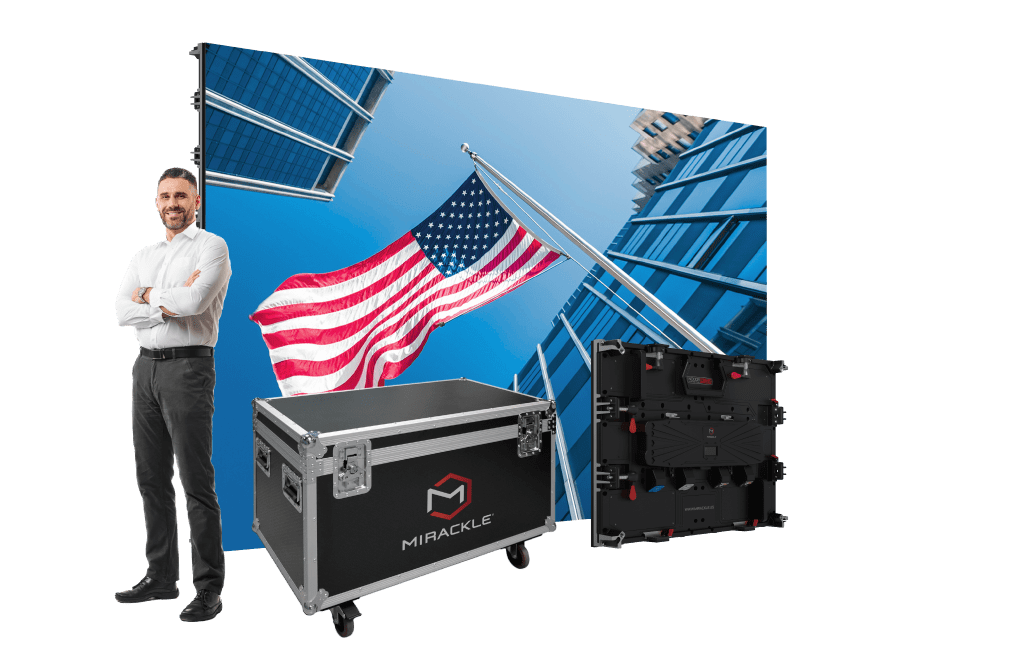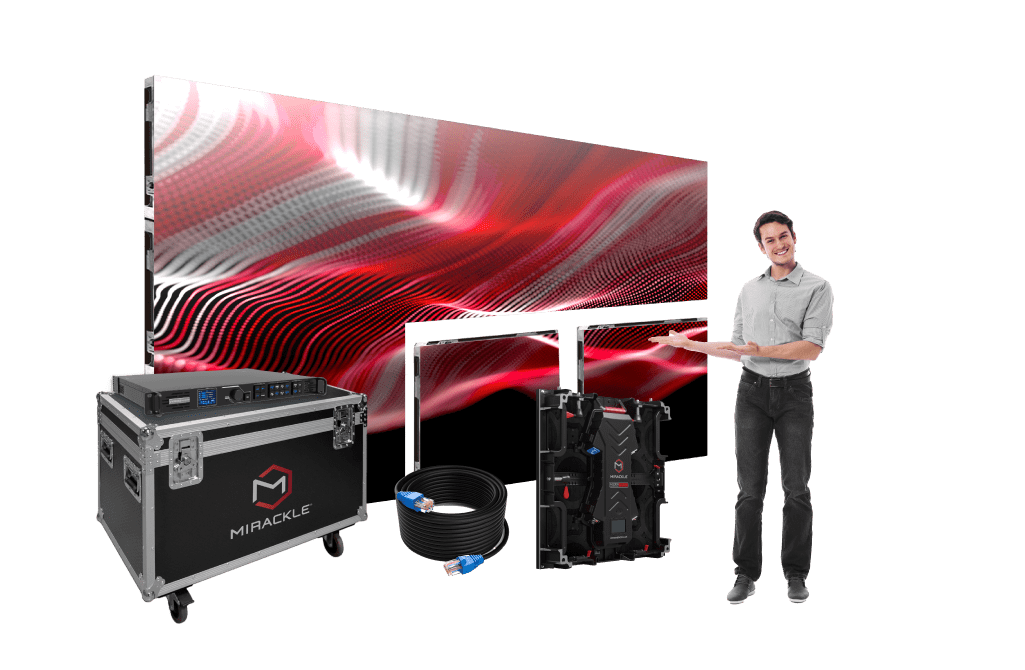SMD vs COB LED Video Walls: Key Differences, Benefits, and Buying Tips
The LED display world keeps evolving. Year after year, new technologies change how businesses, studios, and event organizers capture attention with light and color. Among the most talked-about innovations today are SMD (Surface-Mounted Diode) and COB (Chip-on-Board); two methods that power modern LED video walls and displays across countless industries.


Both can produce incredible brightness, lifelike color, and flexible design options. Still, they differ quite a bit in how they’re built and where they work best. Knowing those differences, especially if you’re comparing fine-pitch indoor screens to large outdoor panels, helps you invest wisely and avoid costly trial and error.
In this guide, we’ll break down how each technology works, what sets them apart, and how to decide which fits your needs. You’ll also find some buying advice on specs like pixel pitch, refresh rate, and installation, so you can choose the right setup for your space and budget.
Understanding SMD and COB LED Display Technologies
Before comparing performance, it helps to know how each system is built. SMD and COB use very different manufacturing processes that affect image quality, durability, and maintenance. Here’s a closer look.
What Is SMD (Surface-Mounted Diode)?
SMD has long been the standard in LED displays. Each pixel is formed by mounting tiny red, green, and blue diodes directly onto a printed circuit board (PCB). This setup gives precise control over color and brightness while keeping the overall structure light and easy to configure.
The result is vivid, consistent color reproduction and excellent brightness, great for both indoor and outdoor LED screens. With refresh rates that often exceed 3,840 Hz, SMD panels handle fast video playback and camera use with ease. Plus, wide viewing angles (around 140°–160°) keep visuals clear from almost any spot in the room.
That’s why SMD LED walls remain a favorite for retail displays, houses of worship, and corporate venues looking for reliable, eye-catching performance at a competitive cost.
What Is COB (Chip-on-Board)?
COB represents the newer wave of LED technology, designed for better image uniformity and durability. Instead of placing individual diodes one by one, multiple LED chips are mounted directly onto the board and sealed with resin, forming a smooth, protective surface.
This design improves heat dissipation, reduces glare, and shields the LEDs from dust and impact; many even meet IP65 protection standards. Because of that, COB panels are ideal for high-precision indoor environments like control rooms or broadcast studios, where fine pixel pitch and consistent clarity are essential. You can stand just a few feet away and still see a perfectly seamless image.

Collaborate With Our Team to Offer Turnkey LED Solutions – From Product Supply to Technical Guidance.
Core Differences Between SMD and COB LED Screens
Both offer impressive visuals, but they’re not interchangeable. Here’s how they differ in practice.
Structure and Manufacturing
SMD panels use separately mounted diodes, making maintenance simpler. Technicians can replace a single diode or magnetic module from the front without disassembling the entire panel.
COB panels, on the other hand, use a sealed surface where the chips are bonded together. This makes them tougher but also harder to repair—when damage occurs, the whole module usually needs replacement.
Brightness and Viewing Experience
SMD displays stand out for their brightness and adaptability. Many include automatic brightness sensors that adjust to ambient light, ideal for outdoor advertising or venues with changing lighting conditions.
COB displays focus on visual smoothness. Their anti-glare coating cuts reflections, and the tight pixel pitch removes visible gaps, giving a natural, detailed picture; especially valuable for film sets, XR, or studio work.
Durability and Protection
Both are built to last, but COB’s sealed design offers better protection. Its resin layer keeps out dust and moisture, maintaining stable performance in tough environments.
SMD models are rugged too (typically IP45-rated) but slightly more sensitive to physical impact. Their advantage lies in easy part replacement and quick serviceability.
Maintenance and Serviceability
SMD wins on ease of maintenance. Technicians can swap parts quickly from the front, reducing downtime.
COB, meanwhile, needs far less maintenance overall. Its sealed surface means there’s little chance for dust buildup or diode failure, making it great for permanent installations where reliability matters more than repair convenience.
Choosing the Right LED Technology for Each Industry
Each industry has its own lighting and audience needs. Here’s where each technology really shines.
Retail and Advertising
For outdoor signs, malls, or store exteriors, SMD LED walls are hard to beat. They’re bright enough for daylight, energy-efficient, and easy to scale; start small and expand over time.
Broadcasting, Virtual Production, and Studios
COB excels in LED panels for studios and XR setups. Its ultra-smooth surface avoids moiré, its high refresh rates sync perfectly with cameras, and its consistent color across panels is essential for virtual sets or green screens. In other words, it’s built for professional image precision.
Corporate, Churches, and Control Rooms
In corporate or worship settings, both options can work depending on size and lighting.
Churches often favor SMD for its brightness and coverage across large sanctuaries.
Control rooms lean toward COB for fine detail and glare-free visibility during long operational hours.
Each can deliver strong results when matched to the environment and budget. LED walls for churches are functioning as a perfect bond that continues to grow around this industry.
Request Partnership Details and Discover How You Can Boost Your Profits With Our Proven LED Products.

Performance Factors That Matter When Buying
A good purchase decision starts with knowing which technical details truly affect what you see on screen, and how long your wall will last.
Pixel Pitch and Resolution
Pixel pitch measures the distance between LEDs, which determines image sharpness and ideal viewing range.
- SMD panels usually range from 1.8 mm to 6 mm, making them flexible for both near and far viewing.
- COB models reach ultra-fine levels (around 0.9 mm to 1.5 mm), offering crisp cinematic detail.
Smaller pitch equals sharper images at close range, but also a higher price, so it’s about finding the right balance for your setup.
Control Systems and Compatibility
Both technologies rely on control systems (video processors, sending cards, and software) to manage synchronization and scaling. Brands like NovaStar are common choices.
Whether you’re streaming live or displaying preloaded content, ensure your system supports formats like HDMI, DVI, or IP streaming. A properly configured setup avoids lag or flicker and keeps playback smooth.
Installation Flexibility
SMD panels are lightweight and adaptable; they can be stacked, hung, or fixed to walls. That’s why rental and event companies love them.
COB panels, built for precision, typically stay put in permanent installations such as showrooms, studios, or corporate spaces where lighting and alignment can be tightly controlled.
Investment vs. Value
Budget always plays a role.
- SMD offers a more affordable entry point and scalability.
- COB requires a higher upfront cost but pays off with durability, image uniformity, and long-term stability.
In both cases, choose certified suppliers who provide genuine parts, training, and a strong warranty (usually around three years) to protect your investment.
Mirackle: Helping You Choose the Right LED Solution
Deciding between SMD and COB isn’t just about specs; it’s about what kind of experience you want your audience to have. That’s where Mirackle comes in.
As one of the leading U.S. LED wall manufacturers and suppliers of LED panels, processors, and accessories, Mirackle helps clients weigh every factor: pixel pitch, brightness, refresh rate, and more, to design a setup that fits perfectly.
Whether it’s a church wanting an inspiring visual presence or a production studio building a lifelike virtual set, Mirackle offers complete, ready-to-install solutions with expert support at every step.
Their focus on innovation and reliability ensures every project (big or small) delivers stunning visuals and lasting value.
Ready to take the next step? Get in touch today and find the LED video wall that brings your vision to life.

